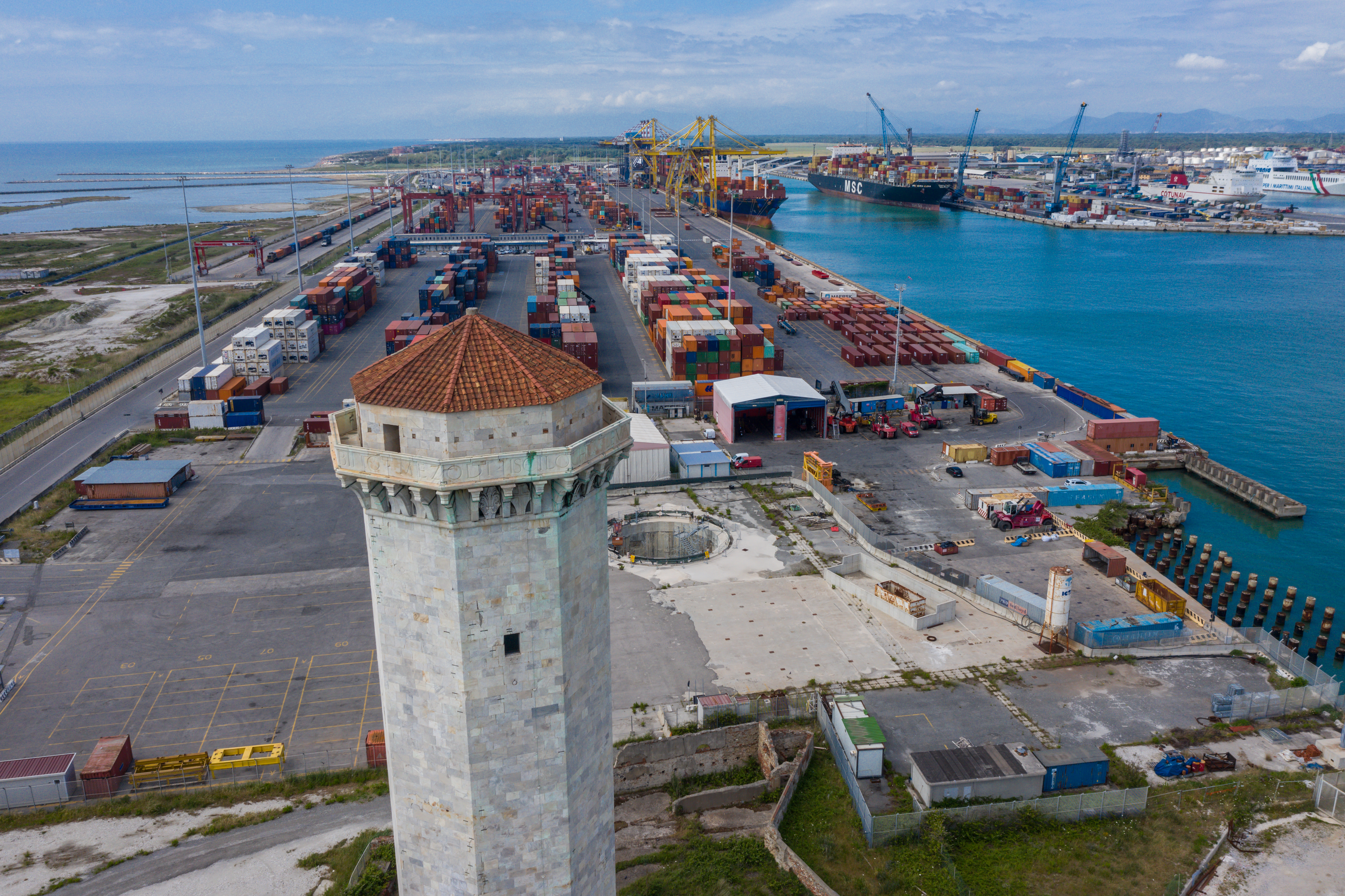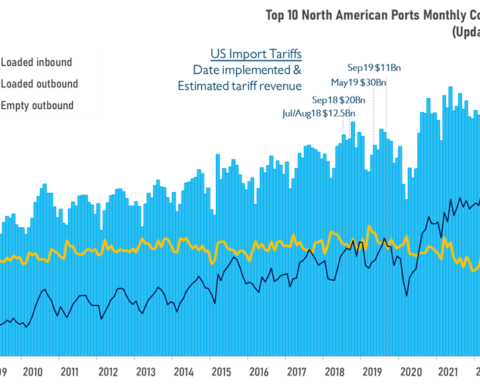Overall, traffic was down in the port of Livorno in the first half of 2023. Like many other Italian ports, it has been negatively affected by the current economic scenario characterized by the slowdown in the European economy and uncertainties linked to the rising cost of money.
In June, the port recorded a 3.2% drop in its traffic turnover, which amounted to 15,410,621 tonnes of goods.
As for containers, the Tuscan port handled 348,273 TEUs; – 10.7% compared to the same period last year. Both traffic to/from the hinterland (-7.2%) and transshipment traffic were down (-28.6%). The latter now has very limited absolute values, representing only 12.8% of total box traffic.
The global downward trend in containerized traffic has negatively affected not only empty containers (-12.1%) but also full containers (-5.4), whose downturn is strictly linked to the drop in export volumes (-8.8%). Import volumes were at last year’s level (+0.3%). Excluding transhipment, 303,000 twenty-foot containers were handled.
Ro-ro traffic was also down: 234,187 vehicles transited along Livorno’s quays during the first semester, – 5.6% compared to the same period last year.
New car traffic, on the other hand, has skyrocketed: between January and June 286,220 new cars were handled, 18.1% more than the previous year. This upturn is in line with the Italian new car registration market which, during this period, shot up by 23% compared to 2022 as a result of the number of vehicles, ordered in 2022, being delivered over the last few months. It remains to be seen whether this trend will be confirmed in the coming months as logistics are gradually normalized.
Passenger traffic (ferries and cruises) has also improved significantly. 1,194,522 passengers transited through the Tuscan port in the first half of 2023. The Port Network Authority’s Statistics Office reports a 26.8% increase compared to the January-to-June period last year.
Ferry passenger traffic increased by 21.6%, with over 997,000 transits. The number of cruise passengers, amounting to 197,483, was up by 61.4% in this first part of the year.
On the other hand, break-bulk forest product volumes, which totaled 1,092,768 tonnes of goods, remained stable (- 0.4% compared to the first half of 2022),
The port’s liquid bulk traffic performed well, up by 15.5% to 3,264,967 tonnes. In contrast, its dry bulk traffic fell by 16.5% to 294,293 tonnes.
Despite its overall traffic volumes being lower than Livorno’s, the port of Piombino has registered a countertrend. During the period under review, traffic increased by 4.3%, to 2,045,509 million tonnes. There has been a 790% growth in liquid bulk traffic, which has risen to 179,079 tonnes after the Golar Tundra regasification vessel became operational, with the transshipment of over 168,000 m3 of natural gas.
Passenger traffic (ferries and cruises) was also encouraging, with a total of 1,213,185 transits (+9.5%). Both ferry passengers (+9.4% to 1,207,794) and cruise traffic (+27.3% to 5,391) increased.
On the other hand, ro-ro traffic has fallen by 7.3%, with a total of 41,564 vehicles passing through the port.
The Elba Island ports (Portoferraio, Rio Marina and Cavo) recorded a significant increase in ro-ro traffic in tonnage terms, which rose by 10.5% to 1,342,136 tonnes. There was, however, a 7.5% downturn in the number of vehicles being handled, which totaled 40,977 units.
Ferry passenger traffic was up by 9.6%, with 1,197,560 transits. The number of cruise passengers also increased: 9,970 people transited during the reporting period; +84.7% compared to January-June 2022.
As a whole, the Network ports closed the first part of the year with a total turnover of 18,798,266 tonnes of goods and a 1.6% drop on a half-yearly basis.
“Our traffic data for the first half of the year reflects the complex scenario the Italian port industry is currently facing, as it grapples with the uncertainties associated with the fading export drive due to weak global demand,” said PNA president Luciano Guerrieri. “Although Livorno, like other ports, has been negatively impacted by this macro-economic phenomena, the port’s good performance in the key sectors of new cars, passengers, and liquid bulk should be highlighted. Piombino and the Elban ports have also shown that they know how to exploit their strengths, with their excellent performance in their passenger and ro-ro traffic sectors,” he concluded.
Translation by Giles Foster




